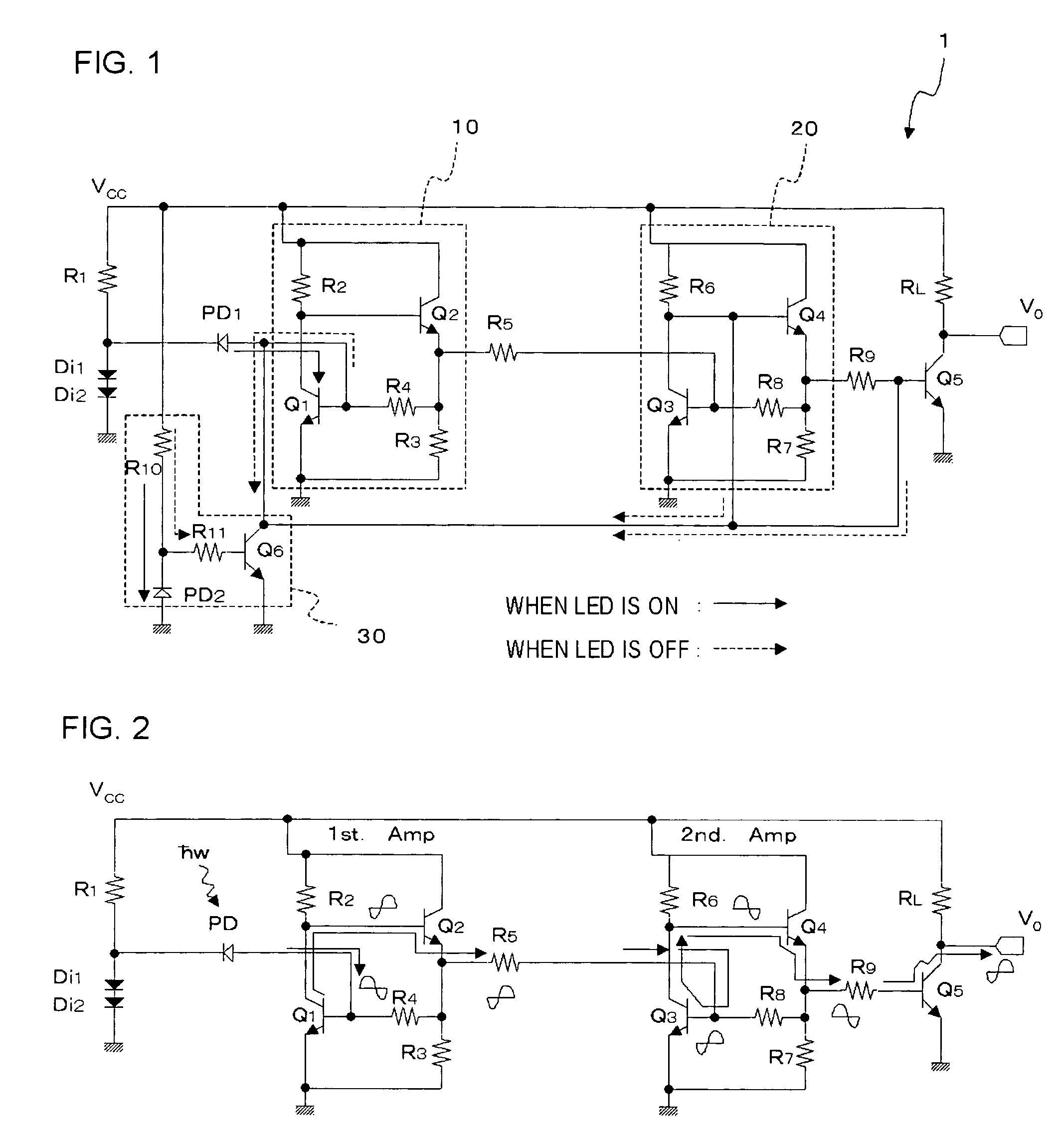Isolator
- Summary
- Abstract
- Description
- Claims
- Application Information
AI Technical Summary
Benefits of technology
Problems solved by technology
Method used
Image
Examples
Embodiment Construction
[0030] The present invention will be now described herein with reference to illustrative embodiments. Those skilled in the art will recognize that many alternative embodiments can be accomplished using the teachings of the present invention and that the invention is not limited to the embodiments illustrated for explanatory purposed.
[0031] Referring to the accompanying drawings, preferred embodiments of the isolator according to the present invention will be described in details hereunder. Same constituents are given an identical numeral in the drawings, and duplicating description will be omitted where appropriate.
[0032]FIG. 1 is a circuit diagram of an isolator according to an embodiment of the present invention. The isolator 1 is a photo isolator including a photodiode PD1 (first photodiode), amplifiers 10, 20, and a carrier discharging circuit 30.
[0033] The photodiode PD1 is an input element that converts an optical signal input from an LED (signal source, not shown) into an ...
PUM
 Login to View More
Login to View More Abstract
Description
Claims
Application Information
 Login to View More
Login to View More - R&D
- Intellectual Property
- Life Sciences
- Materials
- Tech Scout
- Unparalleled Data Quality
- Higher Quality Content
- 60% Fewer Hallucinations
Browse by: Latest US Patents, China's latest patents, Technical Efficacy Thesaurus, Application Domain, Technology Topic, Popular Technical Reports.
© 2025 PatSnap. All rights reserved.Legal|Privacy policy|Modern Slavery Act Transparency Statement|Sitemap|About US| Contact US: help@patsnap.com



